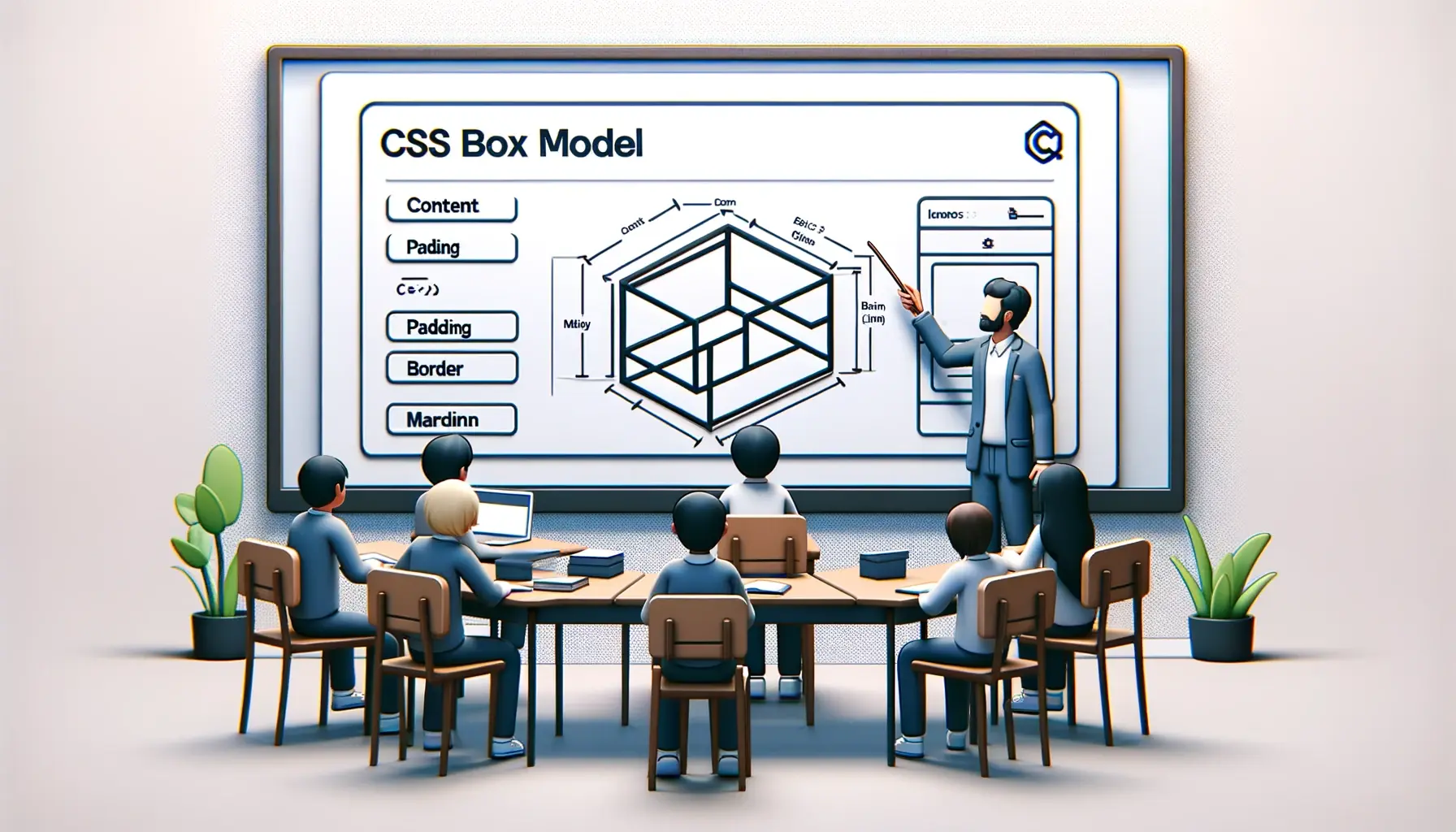
Introduction
The CSS Box Model is a fundamental concept in web design and development, crucial for understanding how elements are rendered on a webpage. It consists of four main components: Content, Padding, Border, and Margin. Each plays a vital role in determining the space and layout of elements.
Here’s a visual representation of the Box Model:
-------------------------------------
| Margin |
| ----------------------------- |
| | Border | |
| | --------------------- | |
| | | Padding | | |
| | | ------------- | | |
| | | | Content | | | |
| | | ------------- | | |
| | --------------------- | |
| ----------------------------- |
-------------------------------------
Let’s discuss each of these components in detail:
Content
The “Content” in the CSS Box Model is the area where text, images, and other media are displayed. It’s the central part of an HTML element.
Controlling Content Size with Width and Height
The width and height properties in the CSS Box Model define an element’s content area size. width sets the horizontal, and height the vertical dimensions. If width and height are not set, the size of the content area will be determined by the content itself. They define the space that the content occupies, but do not include padding, border, or margin.
| |
In this example, the content box has a width of 200 pixels and a height of 100 pixels. This means that the content area will be 200 pixels wide and 100 pixels tall. When you inspect the content box in the browser, and hover on element it will highlight in light blue color.
Padding
Padding in the CSS Box Model refers to the space between the content and the border of an HTML element. It can be used to create extra space inside the element, around the content.
Controlling Padding Padding can be set for each side of an element (top, right, bottom, left) independently, or uniformly using shorthand notation.
- padding-top, padding-right, padding-bottom, padding-left
- Shorthand: padding: [top] [right] [bottom] [left]
Example:
| |
In this example, the content box has a padding of 10px on the top, 15px on the right, 10px on the bottom, and 15px on the left.
| |
In this example, the .content-box class includes padding, which creates extra space around the content inside the <div>. When you inspect this element in the browser, the padding area is typically highlighted in a different color (often green).
Border
The “Border” in the CSS Box Model is a layer that encircles the padding and content of an HTML element. It acts as a frame for the element and can be styled in various ways.
Styling the Border The border can be customized in terms of its width, style, and color. These properties can be set individually or using shorthand notation.
Individual Properties: border-width, border-style, border-color Shorthand Property: border: [width] [style] [color]
Example:
| |
In this example, the content box has a border of 3px width, solid style, and black color.
| |
In this example, the .content-box class includes a 3-pixel wide solid black border. When inspecting this element in a browser, the border area is usually highlighted distinctly, clearly defining the edge of the element.
Margin
The “Margin” in the CSS Box Model is the outermost layer, creating space around the HTML element’s border. It separates the element from other elements on the page.
Controlling Margin on Each Side
Margin can be set for each side of the element (top, right, bottom, and left) individually or using a shorthand property.
Individual Properties: margin-top, margin-right, margin-bottom, margin-left
Shorthand Property: margin: [top] [right] [bottom] [left]
Example:
| |
In this example, the content box has a margin of 10px on the top, 15px on the right, 10px on the bottom, and 15px on the left.
| |
In this example, the .content-box class includes a margin, which creates space around the <div> element. When you inspect this element in the browser, the margin area is typically highlighted in a different color (often orange).
See how it works by combining these elements
Together, these elements determine how a web element occupies space and interacts with other elements on the page. For example, a <div> with specific content size, padding, border, and margin will render differently based on the values of these properties:
| |
In this example, the <div> classed as .box-model demonstrates a practical application of the CSS Box Model. It visually encapsulates the content area, padding, border, and margin, showing how these properties collectively shape the element’s appearance and placement within a web page..
Conclusion
The CSS Box Model is a fundamental concept in web design, integrating Content, Padding, Border, and Margin to define the structure and layout of web elements. It’s essential in determining how elements are sized, spaced, and how they interact with each other on a webpage. Understanding and effectively applying each component allows for precise control over the design, enhancing the visual appeal and functionality of websites. The Box Model serves as a critical tool for web designers and developers in crafting responsive, well-organized web layouts.